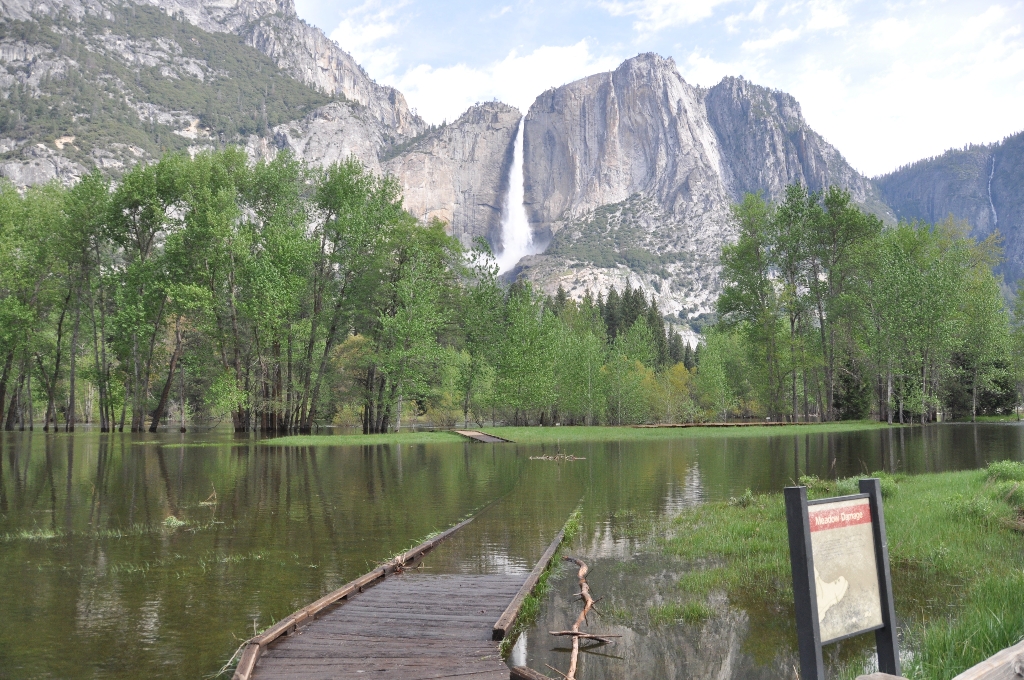
Notice how flat the floor of Yosemite Valley is. At the end of the last glacial period, as with each post-glacial warming trend, huge volumes of water from melting glaciers flowed into Yosemite Valley, bringing tons of rock, gravel, sand, and silt. This debris slowly filled the shallow lake. A succession of bogs and marshes thrived before the meadows eventually appeared. In this warm interglacial phase, meadows were comprised of sedges, grasses, and many other small plants that depend upon a seasonally high water table and periodic flooding. Oaks, pines, and cedars grew around the drier edges.
Look across the Valley for a view of Cook's Meadow. A myriad of meadow vegetation supports a large population of gophers, ground squirrels, mice, birds, and bats. Some larger animals living here are coyote, deer, bear, bobcat, and gray fox. Reptiles, amphibians, and numerous insects thrive above ground and in the deep organic remains of these meadow plants.
People have appreciated this area for thousands of years. As you walk to the next stop, see if you can imagine this place without vehicles, buildings, and roads.
Is there something we missed for this itinerary?
Itineraries across USA


















































